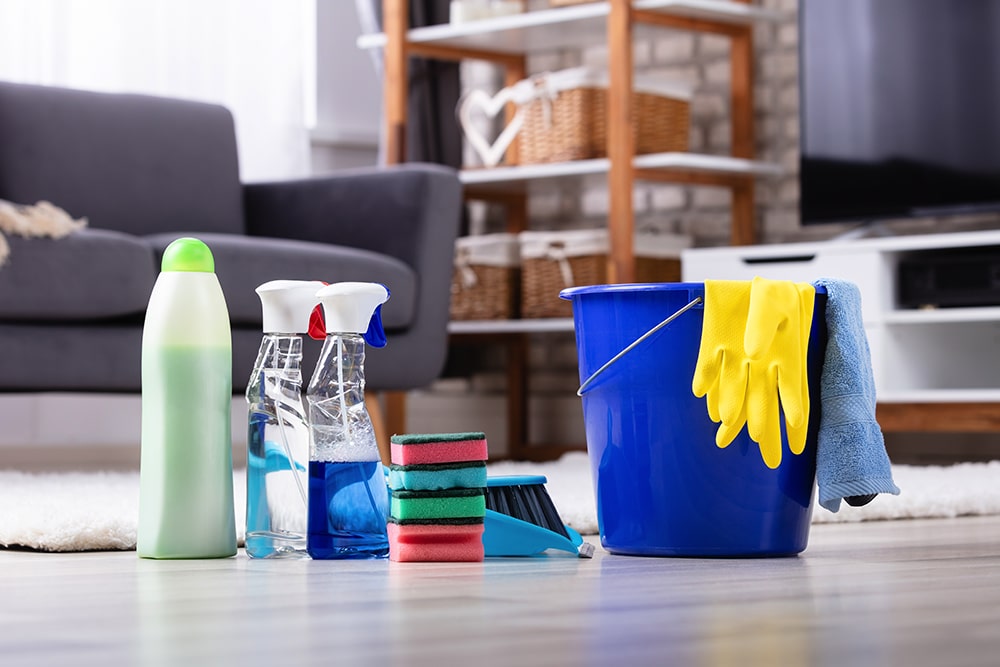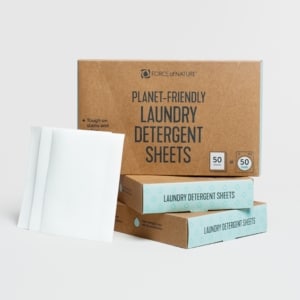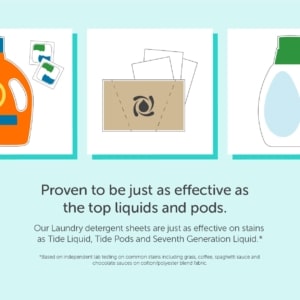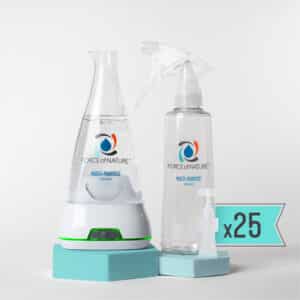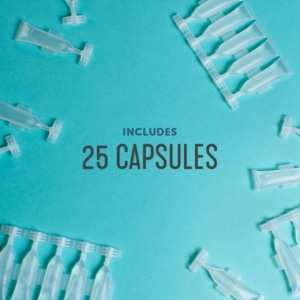During the pandemic, the role of disinfecting in our homes and businesses became front and center as a way of keeping ourselves and our families safe from COVID-19. Unfortunately, as we increased our disinfecting practices, we unintentionally increased our exposure to some seriously toxic chemicals that can have some scary impacts on our health. Due to loopholes in cleaning product regulation, while products are often evaluated for their ability to clean, the chemicals they include are NOT evaluated for safety. Even worse, they are not evaluated for health impact over the short term or long term. Recent studies have even shown that over the long term, chronic exposure to typical cleaning products can be as dangerous for our respiratory systems as smoking a pack of cigarettes a day. That research was on adults, now think about how often our kiddos are exposed to these chemicals each day! From bleach to fragrances, cleaning chemicals contain all kinds of ingredients that aren’t necessarily safe to come into contact with our skin, eyes, and respiratory systems. One of the worst offenders when it comes to toxic exposure in cleaning products is quaternary ammonium compounds (otherwise known as quats or QACs). Here’s what you need to know about quats, how you can avoid them, and a better way to disinfect.
How To Avoid Quats (QACs) For Safer Disinfecting
You may not have heard about quats or QACs, but you’ve definitely come into contact with them. Quats are incredibly common and are included in all kinds of disinfectants, detergents, personal care products like shampoo, and even dryer sheets. Here’s what you need to know about these scary toxins.
What Are Quats or QACs?
Quats are a class of compounds that are effective at killing microbes by attaching to the negatively-charged surfaces of bacteria and viruses, so they’re commonly found in disinfectant products. In fact, over half of the disinfectants on the EPA’s List N (the approved products for use against SARS-CoV-2) contain quats. Quats have been used in consumer products for decades, but, in recent years, scientists have started to question whether we know enough about these compounds and identified risks that come as a result of exposure to them.
What’s So Bad About Quats or QACs?
Quats can disrupt key cellular processes and have been linked to a broad range of health issues including reproductive and developmental problems in animals. In one laboratory where studies were completed on mice, the staff switched from a chlorine-based disinfectant to quats, which resulted in fertility issues and neural tube defects in the mice. Labs have found quats are resilient on surfaces and it can take months to get rid of the quats residue, so it’s critical not to use quats on food-preparation surfaces.
Quats are associated with a broad range of health issues including skin and respiratory irritation and exacerbating allergy and asthma symptoms. Children are at particular risk of developing complications from exposure to harmful chemicals like quats, due to their rapid development and frequent hand to mouth contact. A recent study showed that children have 14–55 times higher daily uptake of QUATs compared to teenagers and adults due to their more frequent hand-to-mouth contact. QUATs have been detected in the blood of the general population and have even been found in breast milk. Asthma and allergies have been linked by researchers to chemical exposures, which contribute to as much as 5% of childhood cancer and 30% of childhood asthma. In 2020, concerned about the impact these compounds could have on children due to the increased use of disinfectant products during the pandemic, The California Department of Public Health issued COVID-19 guidance for schools, specifically guiding schools to avoid the use of disinfectant products that contain asthma-causing chemicals, including quats. In a statement to C&EN, the Department says, “We proactively recommend the use of disinfectants that do not contain [quats] or other harmful chemicals, whenever possible.”
The FDA recently considered banning two kinds of quats from consumer products like hand and body washes: benzalkonium chloride and benzethonium chloride due to lack of available safety data, but ultimately deferred their decision while manufacturers develop safety studies.
Some of the health risks associated with quats or QACs exposure are:
- Respiratory conditions and decreased lung function
- Occupational asthma
- Greater immune reaction to allergens
- Worsening asthma symptoms
- Decreased fertility in mice
- Neural tube defects in mice
- Quat resistance in livestock contributing to antimicrobial resistance
How Can You Avoid QACs or Quats?
Because quats are so common and, at times, the sole active ingredient in a disinfectant, it can be difficult to avoid them. To avoid quats, avoid products with ingredient labels using the words “quaternium” or “-onium chloride” like:
- Benzalkonium chloride
- Benzethonium chloride
- Alkyl dimethyl benzyl ammonium chlorides (C12-16)
- Alkyl dimethyl benzyl ammonium chloride (C14 60%, C16 30%, C12 5%, C18 5%)
- Alkyl dimethyl ethylbenzyl ammonium chloride (C12-14)
- Alkyl dimethyl ethylbenzyl ammonium chlorides (C12-18)
- Didecyldimethylammonium chloride
- Dioctyldimethylammonium chloride
A Better Way To Clean And Disinfect
The bottom line: you don’t need quats or other toxic chemicals that are lurking in cleaning products, to effectively disinfect and clean your home or your workplace.
Force of Nature does not contain quats – or any other toxic, harmful chemical! Instead, our revolutionary cleaning system harnesses the power of Hypochlorous Acid, a powerful disinfectant that is as effective as bleach, but so gentle you can spray it on a pacifier or water bottle without rinsing. Hypochlorous Acid (HOCl) is the same substance your white blood cells produce to fight off infection and has been used in medical applications for decades including wound care, ophthalmology, veterinary medicine, and dermatology. Force of Nature is an EPA-registered hospital-grade disinfectant that kills 99.9% of viruses and bacteria and is on EPA’s List N, the disinfectants approved for use against Covid-19.
Learn More
We’re proud to have created an all-in-one multi-purpose cleaner, deodorizer and EPA registered disinfectant that is as effective as bleach, but without harmful, toxic chemicals like quats. We have 2 options to meet the needs of smaller and larger spaces: our original 12 ounce Force of Nature, and our new large-capacity, commercial-grade Force of Nature Pro that makes 32 or 64 oz. Learn more about Force of Nature, and grab your starter kit.
